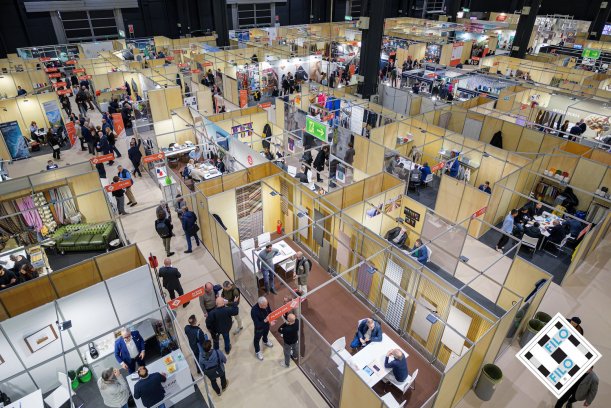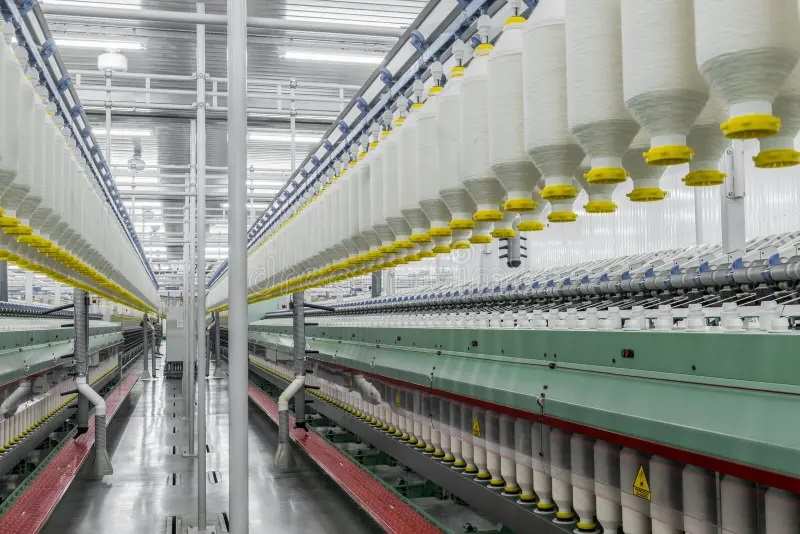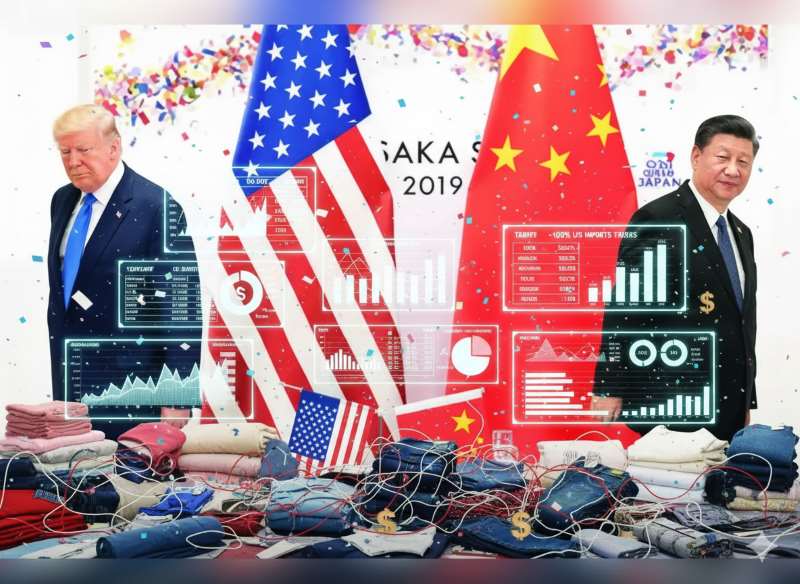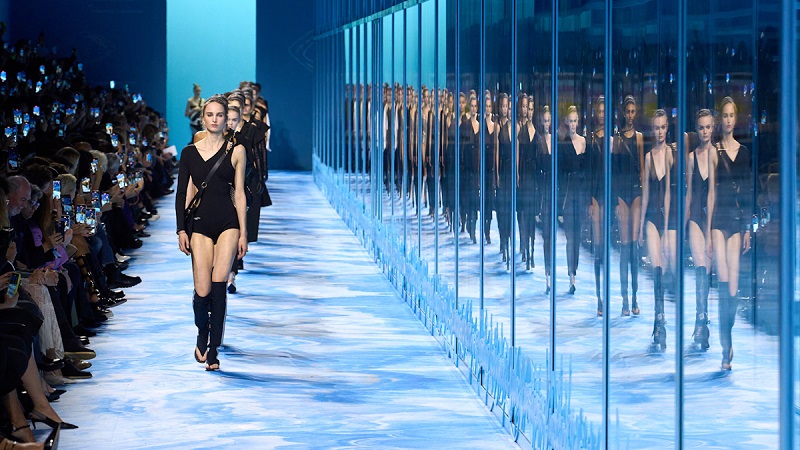FW
GG Fashion (Cambodia) Co Ltd, a subsidiary of Ghim Li Global Pte Ltd., has reported a 1-2 per cent increase in overall production efficiency after implementing Coats Digital’s GSDCost solution in March 2024. The three-phase adoption has reduced unnecessary manual work, improved production planning, and enhanced employee morale across its facilities.
With over 2,200 employees and more than one million garments produced annually, GG Fashion supplies major retailers like Macy’s, Walmart, and Aeropostale. However, prior to GSDCost, the company struggled with high production costs, inconsistent sewing outputs, and inefficient pre-production planning, leading to late deliveries and increased costs.
Wong Chen Hau (Jackson), Continuous Improvement Manager at GG Fashion, noted that past forecasting relied on inaccurate historical data, resulting in unreliable efficiency targets and unplanned overtime. “Without transparent capacity visibility, we faced emergency costs to meet deadlines, impacting profit margins,” he said.
By standardizing time and cost benchmarks using predetermined motion codes, GSDCost has streamlined planning, production, and costing operations. This has led to better collaboration between teams, improved efficiency, and reduced production costs.
Darshana Sanjeewa, Industrial Engineering Supervisor at GG Fashion, highlighted that skill variations among machine operators previously led to inconsistent quality and higher costs. “With GSDCost, we’ve improved productivity and efficiency, making our delivery schedules more reliable and reducing last-minute overtime,” he stated.
The improvements have also enhanced quality control, on-time delivery performance, and customer satisfaction. GG Fashion expects further reductions in Standard-Minute-Values (SMVs) by March 2025, optimizing production efficiency even further.

The 63rd edition of Filo, the International Yarns and Fibres Exhibition, wrapped up in Milan with highly positive results, reaffirming its role as a key industry event. Despite global economic challenges, exhibitors showcased innovative and sustainable collections, attracting significant interest from buyers.
Strong international presence and buyer interest
The exhibition saw a steady flow of buyers over its two-day duration, with a notable increase in international visitors. Thanks to a collaboration between Filo and ITA-Agency, a delegation of 35 professionals and journalists from France, the U.K., the USA, India, Denmark, Germany, Portugal, Spain, South Korea, and Belgium attended the event. Additionally, the Integrated Textile Supply Chain Project (PIF) of the Piedmont Region facilitated the participation of buyers from Denmark, Finland, Ireland, and the U.K. A high-profile delegation from Tunisia, led by the Tunisian Ambassador to Italy, also attended to explore partnership opportunities with Italian manufacturers.
One of the highlights was the Filo Capsule Collection, a curated selection of fabric samples produced with the best manufacturing techniques. The collection, created in collaboration with Tessitura Zanello and Ricamificio Vittorio Vanoni, was well received by visitors and demonstrated the industry’s commitment to quality and sustainability.
Focus on manufacturing and sustainability
Manufacturing took center stage at the event, with the Opening Ceremony titled "The Art of Manufacturing from Yarn to Fabric, from Ideas to Production." Italian Minister for the Environment and Energy Security, Gilberto Pichetto Fratin, emphasized the strength of a unified, high-quality, and sustainable supply chain. Matteo Zoppas, President of ITA-Agency, reiterated the importance of supporting Italian companies in global markets, noting that the textile and apparel sector continues to perform well despite economic uncertainties.
Raffaello Napoleone, President of IT-EX, underscored the significance of trade fairs for the industry, while Pier Francesco Corcione, General Director of Unione Industriale Biellese, highlighted the critical role of innovation and skills development in sustaining growth. Vice-President of the Piedmont Region, Elena Chiorino, reaffirmed the region’s commitment to investing in training and international expansion, emphasizing that competitiveness is driven by quality, innovation, and expertise.
Filo’s role in shaping the industry’s future
Paolo Monfermoso, head of Filo, expressed satisfaction with the event’s outcome, stating that despite economic and geopolitical uncertainties, Filo remains a reference point for the industry. He stressed that success lies in quality, sustainability, and product innovation, key factors in overcoming market challenges. Exhibitors reported positive signals from business interactions, reaffirming Filo’s importance as a platform for supply and demand matchmaking.
Filo’s dedication to manufacturing excellence was further highlighted through the introduction of the Filo Capsule Collection, marking a significant innovation in international exhibitions. Monfermoso noted that Filo not only facilitates business connections but also fosters critical discussions on the future of the textile industry.
The next edition, the 64th Filo, is scheduled for September 10-11, 2025, at Allianz MiCo in Milan, promising another impactful event for the global textile sector.
Adidas reported a strong financial performance for 2024, with a 12 per cent revenue increase, driven by a rebound in China and solid sales in key global markets. The German sportswear giant also posted a net profit of over €1 billion, marking a significant turnaround from the previous year’s struggles.
Adidas revenue for 2024 reached €22.5 billion, up from €20.1 billion in 2023. This growth was largely fueled by a 24 per cent surge in China, where consumer demand rebounded after a slowdown in previous years. North America and Europe also showed steady gains, with sales rising 6 per cent and 8 per cent, respectively. The company’s direct-to-consumer segment, including e-commerce, played a major role, contributing 40 per cent of total sales.
Net profit for the year stood at €1.2 billion, a sharp contrast to the €254 million loss Adidas recorded in 2023 due to excess inventory and challenges linked to the termination of the Yeezy partnership. The company managed to clear surplus stock, improve cost efficiencies, and optimize pricing strategies, which bolstered margins.
Performance in the footwear segment was particularly strong, with demand surging for classic models such as the Samba and Gazelle, as well as newer launches. Adidas also saw success in its collaborations, including high-profile tie-ups with Lionel Messi and Beyonce’s Ivy Park line. Football-related sales gained momentum with the UEFA Euro 2024 and Copa America tournaments boosting demand for jerseys and cleats.
Sustainability remained a focus, with Adidas increasing the share of recycled materials in its products. The company also launched a new circular fashion initiative, allowing customers to return old products for recycling. Looking ahead, Adidas aims to expand its premium product lines, strengthen its digital presence, and enhance innovation in performance wear.
CEO Bjørn Gulden expressed confidence in continued growth, emphasizing that the company has regained momentum. "2024 was a year of transformation, and we are now on a solid path forward. Our brand strength, product innovation, and global reach will drive sustained success."
Following the earnings announcement, Adidas shares rose 5 per cent, reflecting investor confidence in the company’s recovery and future prospects. Analysts expect steady growth in 2025 as Adidas builds on its strong brand presence and market strategy.
According to the Statistics Agency, Uzbekistan exported nearly $2.9 billion worth of textile products between January and December 2024. This constituted 10.6% of the country's total exports.
Of the country’s total textile exports, exports of cotton yarn amounted to $1.237 billion, while exports of finished textile products totaled $1.124 billion. Uzebekistan’s knitwear fabric exports reached $292.1 million during the period while fabric exports totaled $145.9 million. The country also exports socks and hosiery products worth during the year.
While textiles remain a significant industry for Uzbekistan exports, there's a noted trend towards increasing the production and export of finished textile products, adding more value to the exported goods. The country plans to increase its textile exports in the coming years with a special emphasis on exports finished textile products.
The Uzbek government is also actively working to support the textile industry. It is trying to diversify the export markets for textiles. The government is also working towards modernize textile production in the country
The future outlook for garment exports from Bangladesh is promising as orders rebounding, says Faruque Hassan, Former President, BGMEA.
In February, Bangladesh’s RMG exports rose by 1.66 per cent while from July-February, they increased by 10.64 per cent to $26.79 billion, as per a report by the Bangladesh Bank. Knitwear and woven garment exports from the country also experienced double-digit growth.
To address the growing security concerns amongst international retailers, Bangladesh needs to improve its order and order situation, emphasizes Hassan. Low pricing also remains a challenges though the country benefits from the US tariff policies, which help redirect orders from China and Mexico to Bangladesh, he adds.
From July-February this fiscal year, exports of manufactured goods from Bangladesh increased by 10.49 per cent with sectors like plastics, rubber, and headgear showing robust growth. Exports of leather and leather products presented mixed results, with raw leather exports declining but leather footwear exports surging. The engineering sector also recorded growth, driven by electric products and bicycles.
Exports of specialized textiles from the country recorded strong growth though terry towel exports declined as production costs rose and customs issues. However, expanding into new markets, plastic exports from the country registered significant growth.
Economists like Selim Raihan acknowledge the encouraging export figures but express concerns about the sustainability of this growth due to stagnant private investment, inflation, security concerns, and upcoming elections. While recognizing the positive momentum, Raihan cautions that the current growth largely stems from prior orders.
Indian apparel exporters are increasing their production capacities to capitalize on the United States' decision to impose a 10 per cent duty on Chinese imports. These exporters anticipate orders from Europe will improve, contingent on a potential resolution to the Russia-Ukraine conflict. Additionally, they have been receiving orders from global brands that previously sourced from Bangladesh, due to political uncertainties and law-and-order issues in that country.
Manufacturing units in India's largest garment exporting hub, Tiruppur have doubled their capacity in the past six months to meet the rising demand. Units with 500 machines have increased to 1,000, and larger units have increased from 5,000 to 10,000 machines, states KM Subramanian, President, Tiruppur Exporters Association.
The 10 per cent tariff will raise the cost of Chinese textiles and apparel for US consumers, potentially slowing US imports from China and creating opportunities for India and other textile exporting nations. Comprising approximately 28,000 manufacturing units and employing 800,000 people, Tiruppur contributes 55 per cent of India's knitwear exports. It is receiving orders from US brands like GAP, Carter's, Target, and Walmart, as well as European and Australian giants such as Next, Duns, and Woolworths.
Sanjay Jain, Chairman, ICC National Textile Committee, notes, further tariffs on Chinese imports would benefit the Indian apparel and textile sector. He is setting up a new plant in West Bengal to export 2.5 million to 3.5 million casual wear pieces per month. The plant is expected to be operational by July-August.
Facilitated by the US intervention, a resolution to the Russia-Ukraine confloict would boost orders from Europe, opines Jain. The impending free trade agreement between India and the European Union will further stimulate garment and textile exports, he adds
Currently, China accounts for nearly a quarter of US textile and apparel imports. In the January-November period of 2024, US imports of Chinese textiles and apparel totaled $99.125 billion. Second-largest garment supplier after China, Bangladesh faces ongoing political instability, positioning India to capture a larger market share. The apparel industry anticipates a 10-15 per cent growth in exports in the next fiscal year, following an 11.6 per cent increase in the April-January period of fiscal 2025.
Global leader in automation solutions for synthetic fiber production, Salmoiraghi SpA is consolidating its presence in India while also expanding into emerging textile hubs across Southeast Asia, Africa, and Central and South America. The company aims to maintain its leadership through unwavering commitment to innovation, quality, and customer-centric solutions.
Since its initial collaboration with Reliance Industries in 1994, Salmoiraghi has become a trusted partner in India's textile sector, providing cutting-edge automation to prominent industry players. Their journey began with a POY automation project at Reliance's Hazira plant, laying the groundwork for enduring partnerships. Over the years, Salmoiraghi has implemented automation solutions for numerous Reliance plants and expanded its reach to other leading producers like Wellknown Polyester, Bhilosa Industries, Garden Silk, and Sanathan Polycot.
Salmoiraghi specializes in automated handling for various fibers, including POY, FDY, DTY, BCF, glass fiber, carbon fiber, and fabric rolls. Their integrated systems streamline production, from manufacturing to packaging and storage. The company's modular automation designs allow customers to customize solutions, while advanced software enables real-time monitoring and traceability. Each bobbin is assigned a unique identity card, recording handling details at every stage, enhancing operational transparency.
By leveraging automation, Salmoiraghi enhances plant efficiency, minimizes waste, optimizes energy consumption, and promotes sustainability. Their global monitoring systems allow remote performance tracking and issue resolution from their Italian headquarters.
In India, Salmoiraghi has strengthened its presence through a strategic partnership with AB Engineering, ensuring robust commercial operations, installations, and after-sales support. Recognizing the importance of after-sales service, Salmoiraghi is overhauling its Service and Spare Parts Department. Advanced identification systems and service technologies will enhance response times and efficiency, ensuring optimal plant performance for customers.
Celebrating 30 years of success in India, Salmoiraghi reaffirms its commitment to excellence, innovation, and customer satisfaction, aiming to remain a pivotal force in the global textile automation landscape.
Joe Foster, Founder, Reebok has partnered with a burgeoning footwear brand led by Ben Weiss, Syntilay to create AI-designed shoes tailored for content creators. Syntilay leverages artificial intelligence and 3D printing to transform innovative digital designs into tangible footwear.
Syntilay debuted its first AI-generated slide in December, bridging the gap between digital creativity and physical products. Weiss emphasizes the unique design perspectives offered by AI, which challenge traditional footwear aesthetics. Currently, Syntilay offers a single SKU in five color variations, utilizing smartphone camera technology for precise foot measurements and ensuring a personalized fit. The 3D-printed shoes are sold directly to consumers worldwide through their e-commerce platform.
The product’s design has been significantly influenced by Indian designer Kedar Benjamin. AI plays a three-fold role in the creation of these shoes, affirms Weiss. This includes conceptualizing the shoe’s form, generating 3D models from sketches, and creating intricate patterns and shading. This process showcases AI's capacity to enhance design through unique algorithms, he adds.
Syntilay's next phase focuses on scaling production. Having successfully launched an AI-designed product, the brand aims to transition to traditional manufacturing methods for broader market accessibility. Expected within months, this expansion will enable Syntilay to reach global retailers.
Priced at $150, Syntilay’s initial AI-designed shoe is produced on-demand, reducing overhead costs. Valued at $6.25 million, the bootstrapped company engages with potential investors. Weiss highlights the capital-efficient nature of their business model, as on-demand printing eliminates the need for extensive inventory.
Leading manufacturer of shuttle weaving looms, Premier Looms plans to introduce Airjet Looms by 2026.
Established in 1976, Premier Looms has become a leading manufacturer of shuttle weaving looms, with a market share of 70 per cent. The company is renowned for producing looms and their components using the highest quality castings, It’s shuttle weaving looms are produced to ensure minimal wear and tear of spare parts.
The company improvises on its spare parts after studying the reason for the wear and tear. This prevents customers from maintaining large inventories of spares, notes Ashish Amin, Director.
In 2022, Premier Looms introduced India’s first Waterjet look with a width of 190 cm. The new loom boasts components and spares of the same high quality as its shuttle looms. The loom allows weavers to weave two sets of smaller width fabrics simultaneously, states Amin. The company recently received an order for 700 looms from a new entrepreneur.
Over the past few decades, Surat’s weaving industry has undergone significant growth, driven by an influx of migrants from Mehsana district and Saurashtra region in Gujarat. These migrants’ investments have played a crucial role in expanding the industry.
Announced in the recent Union Budget, the Mission for Cotton Productivity is anticipated to launch within the next four to five months.
To be implemented with a budget of Rs 2,500 crore over five years, the the Mission will consist of three mini-missions.
Titled, ‘Kapas Kranti,’the first mini-mission, will focus on enhancing cotton yield and farmer productivity. This will involve strategic initiatives like research, extension services, and human resource development, led by the Central Institute for Cotton Research. Managed by the Cotton Corporation of India, the second mission will involve modernizing of 1,000 ginning and pressing units. The third mission will promote sustainable natural fibers, including banana, milkweed, and bamboo.
Incorporating inputs from all stakeholders, the Mission will proceed in a consultative manner, as per the Ministry of Textiles. The allocation for each mini-mission will vary, but the overall annual allocation will be around Rs 500 crore (approximately $60 million). The Mission will also promote the production of Extra Long Staple (ELS) cotton, including Kasturi cotton.
Globally, major textile brands and retailers are sourcing certified and traceable cotton. The Cotton Productivity Mission will establish traceability for Indian cotton with certification.












